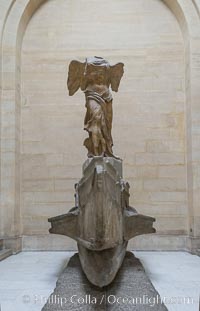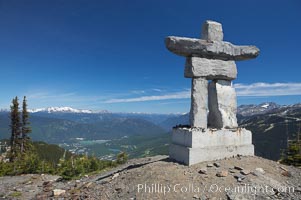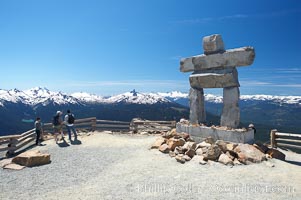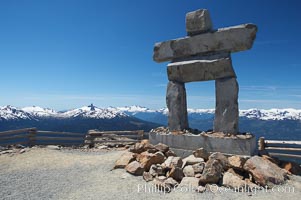
The Thinker (Le Penseur) is a bronze sculpture on marble pedestal by Auguste Rodin. now in the Musee Rodin in Paris. It depicts a man in sober meditation battling with a powerful internal struggle. It is often used to represent philosophy.
Location: Musee Rodin, Paris, France
Image ID: 28173
Location: Musee Rodin, Paris, France
Image ID: 28173

Musee Rodin, in Paris, France, is a museum dedicated to the works of the French sculptor Auguste Rodin.
Location: Musee Rodin, Paris, France
Image ID: 28174
Location: Musee Rodin, Paris, France
Image ID: 28174

Aphrodite of Milos, Aphrodite tes Melou, better known as the Venus de Milo, is an ancient Greek marble statue and one of the most famous works of ancient Greek sculpture. Created sometime between 130 and 100 BC, it is believed to depict Aphrodite, the Greek goddess of love and beauty (Venus to the Romans).
Location: Musee du Louvre, Paris, France
Image ID: 28097
Location: Musee du Louvre, Paris, France
Image ID: 28097

Musee Rodin, in Paris, France, is a museum dedicated to the works of the French sculptor Auguste Rodin.
Location: Musee Rodin, Paris, France
Image ID: 28175
Location: Musee Rodin, Paris, France
Image ID: 28175

The Winged Victory of Samothrace, also called the Nike of Samothrace, is a 2nd century BC marble sculpture of the Greek goddess Nike (Victory). The Nike of Samothrace, discovered in 1863, is estimated to have been created around 190 BC.
Location: Musee du Louvre, Paris, France
Image ID: 28102
Location: Musee du Louvre, Paris, France
Image ID: 28102

Elgin Marbles, a collection of classical Greek marble sculptures that originally were part of the Parthenon of Athens.
Location: British Museum, London, United Kingdom
Image ID: 28323
Panorama dimensions: 3224 x 9957
Location: British Museum, London, United Kingdom
Image ID: 28323
Panorama dimensions: 3224 x 9957

Colossal limestone bust of Amenhotep III, from the mortuary temple of Amenhotep III, Thebes, Egypt. 18th Dynasty, about 1350 BC.
Location: British Museum, London, United Kingdom
Image ID: 28325
Location: British Museum, London, United Kingdom
Image ID: 28325

The Winged Victory of Samothrace, also called the Nike of Samothrace, is a 2nd century BC marble sculpture of the Greek goddess Nike (Victory). The Nike of Samothrace, discovered in 1863, is estimated to have been created around 190 BC.
Location: Musee du Louvre, Paris, France
Image ID: 28103
Location: Musee du Louvre, Paris, France
Image ID: 28103

Marble statue of a naked Aphrodite crouching at her bath, Roman, 2nd century AD.
Location: British Museum, London, United Kingdom
Image ID: 28310
Location: British Museum, London, United Kingdom
Image ID: 28310

Elgin Marbles, a collection of classical Greek marble sculptures that originally were part of the Parthenon of Athens.
Location: British Museum, London, United Kingdom
Image ID: 28311
Location: British Museum, London, United Kingdom
Image ID: 28311

Elgin Marbles, a collection of classical Greek marble sculptures that originally were part of the Parthenon of Athens.
Location: British Museum, London, United Kingdom
Image ID: 28312
Location: British Museum, London, United Kingdom
Image ID: 28312

Mausoleum at Halikarnassos. Colossal statue of a man and woman from the Mausoleum at Halikarnassos. Greek, around 350 BC. From modern Bodrum, south-western Turkey.
Location: British Museum, London, United Kingdom
Image ID: 28314
Location: British Museum, London, United Kingdom
Image ID: 28314

Marble statue of a naked Aphrodite crouching at her bath, Roman, 2nd century AD.
Location: British Museum, London, United Kingdom
Image ID: 28315
Location: British Museum, London, United Kingdom
Image ID: 28315

Colossal granite head of Amenhotep III, from the temple of Mut, Karnak, Egypt. Originally 18th Dynasty, around 1370 BC.
Location: British Museum, London, United Kingdom
Image ID: 28322
Location: British Museum, London, United Kingdom
Image ID: 28322

Ilanaaq, the logo of the 2010 Winter Olympics in Vancouver, is formed of stone in the Inukshuk-style of traditional Inuit sculpture. Located near the Whistler mountain gondola station, overlooking Whistler Village and Green Lake in the distance.
Location: Whistler, British Columbia, Canada
Image ID: 21007
Location: Whistler, British Columbia, Canada
Image ID: 21007

Ilanaaq, the logo of the 2010 Winter Olympics in Vancouver, is formed of stone in the Inukshuk-style of traditional Inuit sculpture. This one is located on the summit of Whistler Mountain.
Location: Whistler, British Columbia, Canada
Image ID: 21018
Location: Whistler, British Columbia, Canada
Image ID: 21018

Ilanaaq, the logo of the 2010 Winter Olympics in Vancouver, is formed of stone in the Inukshuk-style of traditional Inuit sculpture. Located near the Whistler mountain gondola station, overlooking Whistler Village and Green Lake in the distance.
Location: Whistler, British Columbia, Canada
Image ID: 21008
Location: Whistler, British Columbia, Canada
Image ID: 21008

Ilanaaq, the logo of the 2010 Winter Olympics in Vancouver, is formed of stone in the Inukshuk-style of traditional Inuit sculpture. Located near the Whistler mountain gondola station, overlooking Whistler Village and Green Lake in the distance.
Location: Whistler, British Columbia, Canada
Image ID: 21009
Location: Whistler, British Columbia, Canada
Image ID: 21009

Ilanaaq, the logo of the 2010 Winter Olympics in Vancouver, is formed of stone in the Inukshuk-style of traditional Inuit sculpture. Located near the Whistler mountain gondola station, overlooking Whistler Village and Green Lake in the distance.
Location: Whistler, British Columbia, Canada
Image ID: 21010
Location: Whistler, British Columbia, Canada
Image ID: 21010

Ilanaaq, the logo of the 2010 Winter Olympics in Vancouver, is formed of stone in the Inukshuk-style of traditional Inuit sculpture. This one is located on the summit of Whistler Mountain.
Location: Whistler, British Columbia, Canada
Image ID: 21014
Location: Whistler, British Columbia, Canada
Image ID: 21014

Ilanaaq, the logo of the 2010 Winter Olympics in Vancouver, is formed of stone in the Inukshuk-style of traditional Inuit sculpture. This one is located on the summit of Whistler Mountain.
Location: Whistler, British Columbia, Canada
Image ID: 21015
Location: Whistler, British Columbia, Canada
Image ID: 21015

Ilanaaq, the logo of the 2010 Winter Olympics in Vancouver, is formed of stone in the Inukshuk-style of traditional Inuit sculpture. This one is located on the summit of Whistler Mountain.
Location: Whistler, British Columbia, Canada
Image ID: 21016
Location: Whistler, British Columbia, Canada
Image ID: 21016

Ilanaaq, the logo of the 2010 Winter Olympics in Vancouver, is formed of stone in the Inukshuk-style of traditional Inuit sculpture. This one is located on the summit of Whistler Mountain.
Location: Whistler, British Columbia, Canada
Image ID: 21017
Location: Whistler, British Columbia, Canada
Image ID: 21017

Ilanaaq, the logo of the 2010 Winter Olympics in Vancouver, is formed of stone in the Inukshuk-style of traditional Inuit sculpture. This one is located on the summit of Whistler Mountain.
Location: Whistler, British Columbia, Canada
Image ID: 21019
Location: Whistler, British Columbia, Canada
Image ID: 21019

350-foot long sea serpent, a work of art in Borrego Springs by Ricardo Breceda, sunset, Galleta Meadows.
Location: Borrego Springs, California
Image ID: 28811
Location: Borrego Springs, California
Image ID: 28811

Mammoth art sculpture, by Ricardo Breceda, at night under the stars in Galleta Meadows.
Location: Borrego Springs, California
Image ID: 28812
Location: Borrego Springs, California
Image ID: 28812

Mammoth art sculpture, by Ricardo Breceda, at night under the stars in Galleta Meadows.
Location: Borrego Springs, California
Image ID: 28813
Location: Borrego Springs, California
Image ID: 28813

350-foot long sea serpent, a work of art in Borrego Springs by Ricardo Breceda, sunset, Galleta Meadows.
Location: Borrego Springs, California
Image ID: 28814
Location: Borrego Springs, California
Image ID: 28814

350-foot long sea serpent, a work of art in Borrego Springs by Ricardo Breceda, sunset, Galleta Meadows.
Location: Borrego Springs, California
Image ID: 28815
Location: Borrego Springs, California
Image ID: 28815

350-foot long sea serpent, a work of art in Borrego Springs by Ricardo Breceda, sunset, Galleta Meadows.
Location: Borrego Springs, California
Image ID: 28816
Location: Borrego Springs, California
Image ID: 28816